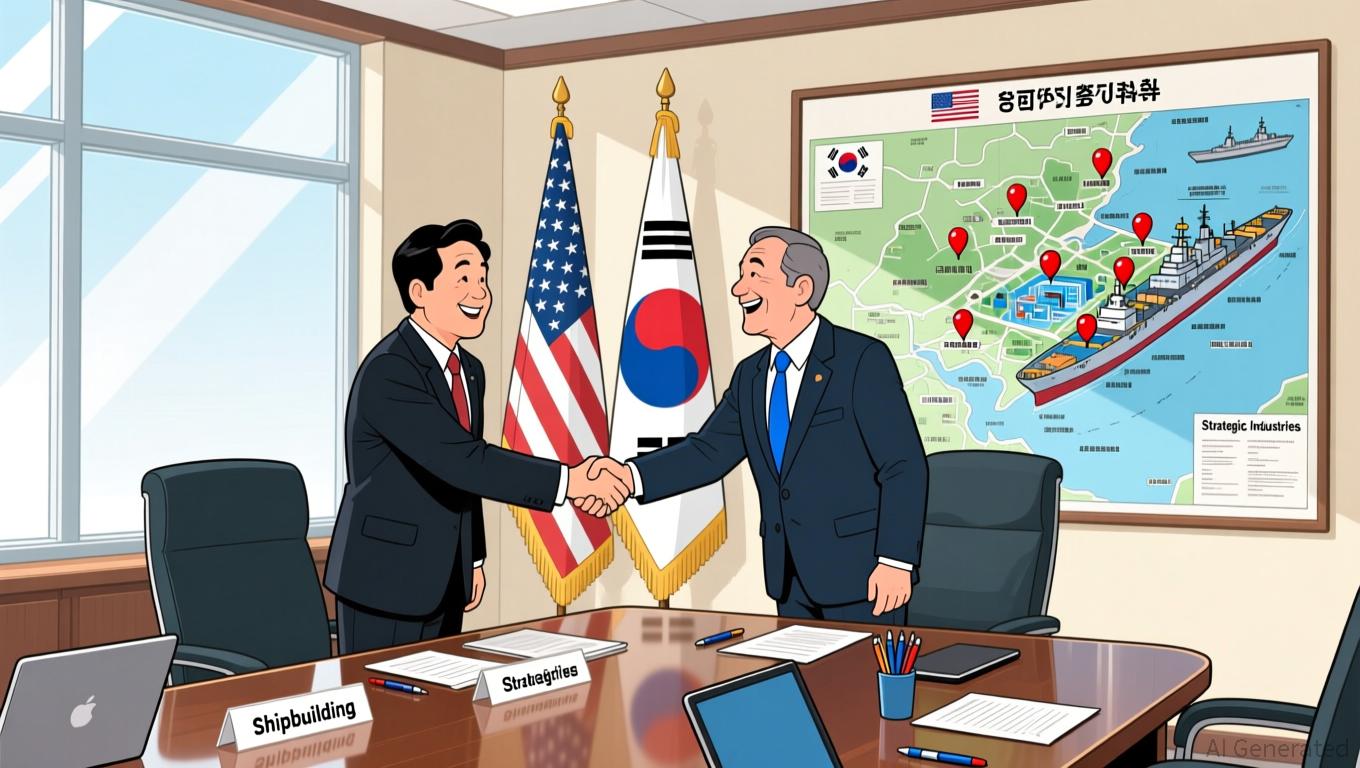US-South Korea $350 Billion Agreement Seeks to Bolster Economic Stability and Address China’s Influence
- US and South Korea finalize $350B economic-security pact to counter China, boost resilience. - Includes $150B in US shipbuilding, $200B strategic investments, and 232 tariff cuts on autos, parts, lumber, and pharmaceuticals. - Authorizes Seoul to build nuclear submarines, expands uranium enrichment collaboration, and commits $25B in US military purchases by 2030. - South Korea pledges 3.5% GDP defense spending, US provides $33B troop support; EV subsidies to offset US tariff impacts on automakers .
The United States and South Korea have reached a historic agreement that redefines their economic and security partnership. Announced on November 14, the accord features a $350 billion commitment from South Korea to invest in American industries, major tariff cuts, and enhanced defense ties, including permission for Seoul to develop nuclear-powered submarines.
A central element of the agreement is South Korea’s pledge to invest $150 billion in the U.S. shipbuilding industry, with an additional $200 billion allocated to “strategic investments” in various sectors.

The two countries have also broadened their defense collaboration. South Korea has obtained U.S. consent to build nuclear-powered attack submarines, fulfilling a long-term strategic ambition. Furthermore, both sides agreed to
President Lee Jae Myung of South Korea stressed that the investments would target commercially sound ventures, addressing local worries about potential financial risks. “Trade and security talks have now officially wrapped up,” Lee said,
At the same time, South Korea is taking steps to mitigate the effects of U.S. tariffs on its automotive sector. The government intends to increase subsidies for electric vehicles by more than 30% and introduce incentives for trading in older cars to encourage EV purchases domestically. These policies are designed to ease the financial burden on companies like Hyundai and Kia, which
This agreement is part of a broader strategy to boost economic stability in the face of international competition, especially from China. South Korea’s $350 billion investment initiative is projected to generate jobs and strengthen U.S. manufacturing, while tariff reductions are expected to enhance the competitiveness of South Korean exports. The deal also supports U.S. efforts to secure supply chains and counter China’s regional influence.
Disclaimer: The content of this article solely reflects the author's opinion and does not represent the platform in any capacity. This article is not intended to serve as a reference for making investment decisions.
You may also like
Why Crypto Needs a Distributed Cloud Now
Crypto apps rely on centralized servers. A distributed cloud could be the missing link for true decentralization.The Case for a Distributed Cloud in CryptoBuilding a Resilient Crypto Future

Crypto Fear Index Plunges as Bitcoin Hovers Near $100K
Crypto market fear hits a low not seen since March, while Bitcoin stalls near $100K and gold/silver rally amid shutdown recovery.Bitcoin Stalls, While Precious Metals ShineWhat’s Next for the Crypto Market?

Czech National Bank Trials $1M Digital Reserve
Czech National Bank begins $1M digital asset trial to explore tokenized finance, signaling cautious steps toward a digital future.No Rush for Full-Scale IntegrationPreparing for a Digital Financial Future

Will the Fed Cut Rates in December?
A December Fed rate cut could boost crypto, stocks, and investor sentiment before the holidays.How a December Rate Cut Could Impact MarketsInvestors Watching for a Christmas Rally
